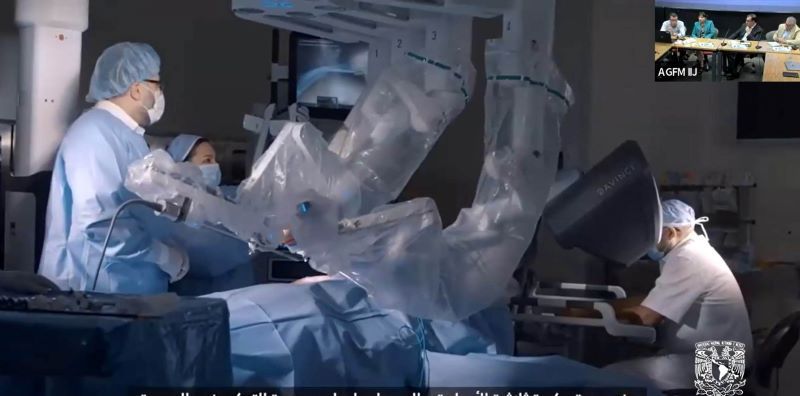Could technology replace medical experts?
Learn how AI is advancing towards autonomy in diagnosing diseases, and the legal challenges it faces in case of wrong diagnoses or treatments.

The use of artificial intelligence (AI) in the medical field to diagnose diseases is advancing towards autonomy and the replacement of human activities with machines; however, this will face legal challenges in the future when there are wrong diagnoses, incorrect treatments, or damage to the patient's health.
Fernando Arámbula Cosío, the researcher at the Yucatán Unit of UNAM's Institute for Research in Applied Mathematics and Systems (IIMAS), Fernando Arámbula Cosío, raised the above and wondered:
"In these cases who will be responsible, the manufacturer of the image analysis system, the hospital, the biomedical engineering department of the hospital, or the treating physician?".
Arámbula Cosío participated in the Permanent Seminar Artificial Intelligence and Law, organized by UNAM's Institute for Legal Research.
In the conference in hybrid format entitled "Applied artificial intelligence: Image analysis applied to surgery and diagnosis using artificial intelligence", he explained how this discipline is progressing with technologies that are getting closer and closer to the replacement of medical specialists by technicians prepared to handle this equipment.
The IIMAS academic pointed out that diagnosis is based with greater emphasis on computational imaging tools, which are used in X-rays, tomography, ultrasound, and magnetic resonance, among other techniques used to detect diseases.
The development of cutting-edge methods and equipment involves AI, a set of systems or combinations of algorithms whose purpose is to create machines that mimic human intelligence to perform tasks, which can be improved according to the information they gather.
Using this discipline of computer science, the expert works on various models that make it possible, for example, to trace the contour and shape of the prostate from a real image, and then replicate it in a computational model that uses statistics.
A method that is being tested in several countries is fetometry, where ultrasound images of a baby are used to elaborate artificial intelligence patterns with which, for example, the cerebellum or femur of the fetus can be measured to monitor its proper development, he said.
"These measurements are made, supported by the ultrasound, by the gynecologist. But with the help of patterns and the artificial intelligence tool, a less specialized technician could perform the measurements, which would facilitate diagnosis in rural or very distant areas," he added.
As for legal aspects, at present the human expert is responsible by law, regardless of technological capabilities. Regarding labor issues, Arámbula Cosío said that with the help of AI methods, it would be possible to replace medical specialists with radiologists, for example.
According to the university professor, it is important to consider whether in the future the ideal will be computerized support for human diagnosis, massive computerized diagnosis with human validation, or maintaining human validation on a case-by-case basis.
So far, scientific and technological advances in this area allow adequate support to human experts in specific medical imaging tasks, such as fetometry in ultrasound, mastography, and CT (computed axial tomography) of the lungs, he concluded.




